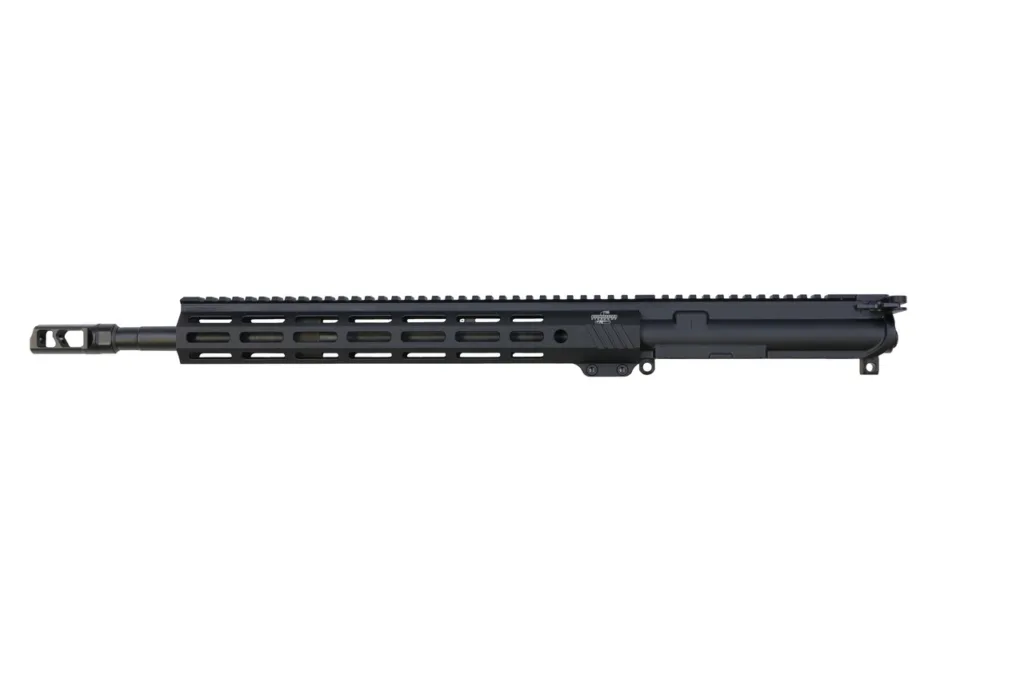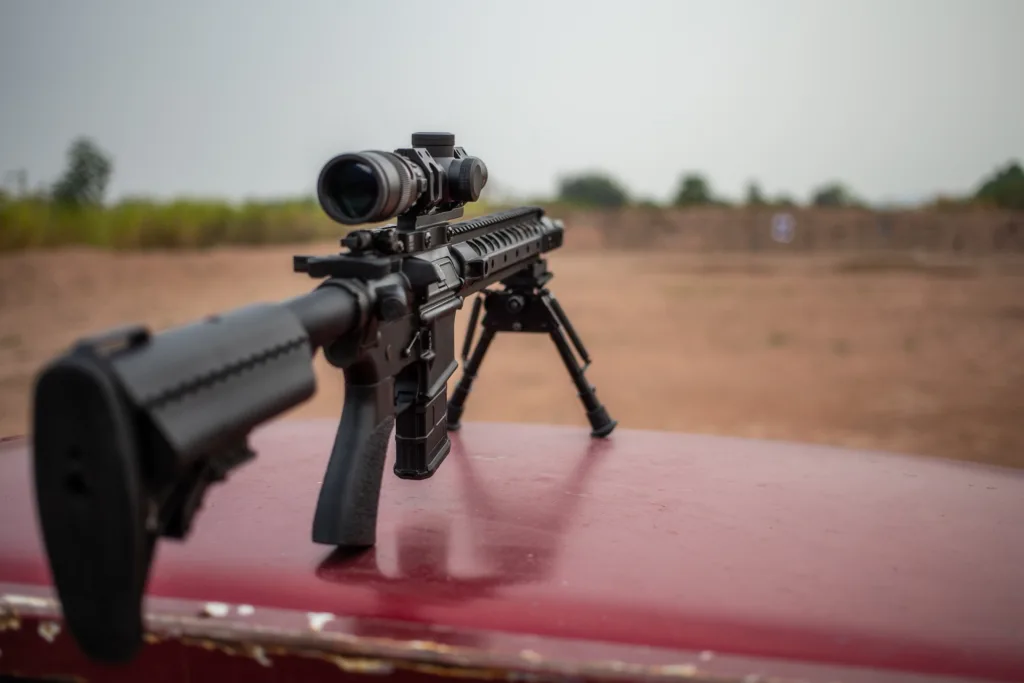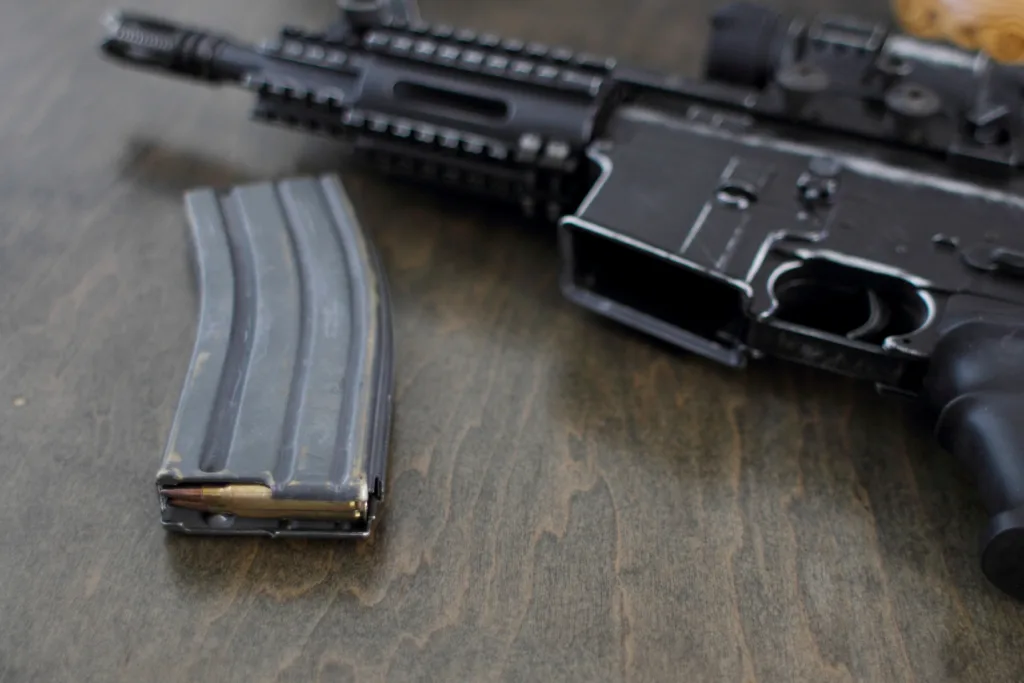Building an AR-15 from scratch allows enthusiasts to customize a rifle to their exact specifications. This guide provides an overview of the essential components, offering both detailed descriptions and practical considerations to inform your build.
Lower Receiver
Overview: The lower receiver serves as the chassis of the AR-15, containing the fire control group, magazine well, and attachment points for the stock and upper receiver.
- Materials: Aluminum (for durability and weight balance) and Polymer (for a lightweight build).
- Types: Stripped (requiring full assembly) vs. Complete (ready out of the box).
Considerations: Aluminum receivers offer ruggedness, while polymer versions are best for lightweight configurations. Stripped receivers allow for a more personalized build, though complete receivers can save time.
Upper Receiver
Overview: Housing the bolt carrier group, barrel, and charging handle, the upper receiver is critical for the rifle’s operation and accuracy.
- Barrel Length & Twist: Match to your ammunition preference and intended use.
- Handguards: Free-floating (for accuracy) vs. Drop-in (ease of installation).
Considerations: Barrel selection affects range and accuracy. Free-floating handguards improve accuracy but require a more involved installation process.

Fire Control Group
Components: Includes the trigger, hammer, disconnector, and safety selector.
- Trigger Options: Mil-spec (standard use) vs. Custom (enhanced precision).
Considerations: Investing in quality triggers can significantly improve shooting experience, especially for precision tasks.
Buffer System and Stock
- Stocks: Fixed (for stability) vs. Adjustable (for versatility).
- Buffer Weights: Light to heavy, affecting recoil and cycling speed.
Considerations: Adjustable stocks offer ergonomic customization, while buffer weight tuning can optimize performance based on your load and rate of fire.
Sights and Optics
- Iron Sights: Reliable and straightforward aiming method.
- Optics: Red dots (close range) to scopes (long range).
Considerations: Optic selection should align with your shooting distance and conditions. Consider mount stability and compatibility.

Accessories
Handguards: Choice impacts accessory compatibility and barrel performance.
- Attachments: Lights, bipods, and grips enhance functionality.
Considerations: Ensure accessories and handguard choices support your intended use, whether for home defense, competition, or recreational shooting.
Magazines and Ammunition
- Magazines: Capacity and material choice of your magazines impact weight and durability.
- Ammunition: Select based on barrel twist rate and intended use.
Considerations: Reliable feeding and performance are paramount, necessitating careful selection of both magazines and ammunition.
Practical Advice and Tips
- Legal Considerations: Check local laws regarding firearm assembly and customization.
- Assembly Tools: Invest in quality tools for a smoother building experience.
- Safety Checks: Perform thorough safety inspections and function tests before use.

Quick Guide to Assembling an AR-15
Assembling an AR-15 requires attention to detail across several key steps. Here’s a streamlined overview:
- Prepare Your Workspace: Gather all necessary tools and components. Essential tools include punches, a hammer, an armorer’s wrench, and screwdrivers.
- Assemble the Lower Receiver:
- Install the magazine catch.
- Assemble the trigger mechanism, including the trigger, springs, and pins.
- Insert the safety selector and attach the pistol grip.
- Install the buffer assembly, including the buffer tube, spring, and buffer.
- Assemble the Upper Receiver:
- Secure the barrel to the upper receiver using the barrel nut.
- Attach the gas block and gas tube.
- Install the handguard.
- Insert the bolt carrier group and charging handle.
- Join Upper and Lower Receivers: Align and connect the upper and lower receivers, securing them with the pivot and takedown pins.
- Final Checks: Conduct a safety check and function test to ensure all parts are correctly installed and operational.
This concise guide outlines the essential steps to assemble an AR-15, ensuring a successful build. Remember, safety and precision are paramount throughout the process.
Final Thoughts
By understanding each component’s role and options, builders can make informed decisions tailored to their specific needs. This guide aims to simplify the AR-15 building process, offering a foundation upon which enthusiasts can build and customize their rifles with confidence.
Incorporating practical tips, considerations, and a clearer breakdown of choices offers readers a holistic view of the building process. This approach not only educates but also empowers readers to undertake their build with a better understanding of how each decision impacts the overall functionality and performance of their AR-15.




